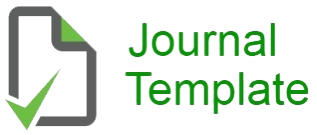MODERN APPROACHES TO RISK MANAGEMENT IN INVESTMENT PORTFOLIOS: STRATEGIES IN MARKET VOLATILITY
Keywords:
Risk Management, Investment Portfolios, Market Volatility, Modern Portfolio Theory, Behavioral Finance, Algorithmic Trading, Dynamic Asset Allocation, Quantitative Models.Abstract
This paper explores the evolution of risk management strategies in investment portfolios, explicitly focusing on addressing challenges posed by market volatility. Effective risk management is paramount for safeguarding investor assets in an era of globalization, technological advancements, and heightened interconnectedness. Traditional theories, such as Modern Portfolio Theory (MPT) and the Capital Asset Pricing Model (CAPM), have provided foundational frameworks. However, limitations in addressing the dynamic nature of contemporary financial markets during periods of heightened volatility have led to the emergence of modern approaches. This study investigates the integration of technological advancements, insights from behavioral finance, and sophisticated quantitative models to provide nuanced and adaptive risk management strategies. Algorithmic trading, dynamic asset allocation models, and behavioral insights contribute to a comprehensive toolkit for managing risk during market volatility. The paper assesses the efficacy of these modern approaches in navigating the complexities of fluctuating markets and offers insights into the evolving landscape of risk management.
References
Allioui, H., & Mourdi, Y. (2023). Exploring the full potentials of IoT for better financial growth and stability: A comprehensive survey. Sensors, 23(19), 8015.
Bibri, S. E., Krogstie, J., Kaboli, A., & Alahi, A. (2024). Smarter eco-cities and their leading-edge artificial intelligence of things solutions for environmental sustainability: A comprehensive systematic review. Environmental Science and Ecotechnology, 19, 100330.
Bogers, M., Zobel, A. K., Afuah, A., Almirall, E., Brunswicker, S., Dahlander, L., ... & Ter Wal, A. L. (2017). The open innovation research landscape: Established perspectives and emerging themes across different levels of analysis. Industry and Innovation, 24(1), 8-40.
Borrego, M., Foster, M. J., & Froyd, J. E. (2014). Systematic literature reviews in engineering education and other developing interdisciplinary fields. Journal of Engineering Education, 103(1), 45-76.
Boyatzis, R. E., Goleman, D., Gerli, F., Bonesso, S., & Cortellazzo, L. (2019). Emotional and social intelligence competencies and the intentional change process. Cognitive Readiness in Project Teams: Reducing Project Complexity and Increasing Success in Project Management, eds C. Belack, D. Di Filippo, and I. Di Filippo (New York, NY: Productivity Press, Taylor and Francis Group), 147-169.
Carney, M. (2015). Breaking the tragedy of the horizon–climate change and financial stability. Speech given at Lloyd’s of London, 29, 220-230.
Cortellazzo, L., Bruni, E., & Zampieri, R. (2019). The role of leadership in a digitalized world: A review. Frontiers in Psychology, 10, 1938.
Dietz, S., & Stern, N. (2015). Endogenous growth, convexity of damage and climate risk: how Nordhaus' framework supports deep cuts in carbon emissions. The Economic Journal, 125(583), 574-620.
Fellows, R. F., & Liu, A. M. (2021). Research methods for construction. John Wiley & Sons.
Fenton, N. (2018). Digital, political, and radical. John Wiley & Sons.
Hendershott, T., Jones, C. M., & Menkveld, A. J. (2011). Does algorithmic trading improve liquidity? The Journal of finance, 66(1), 1-33.
Jorion, P. (2010). Financial Risk Manager Handbook: FRM Part I/Part II (Vol. 625). John Wiley & Sons.
Kemp, E., Porter III, M., Anaza, N. A., & Min, D. J. (2021). The impact of storytelling in creating firm and customer connections in online environments. Journal of Research in Interactive Marketing, 15(1), 104-124.
Mariani, M. M., Machado, I., & Nambisan, S. (2023). Types of innovation and artificial intelligence: A systematic quantitative literature review and research agenda. Journal of Business Research, 155, 113364.
Mayukh, N., & Al-Giffari, H. A. (2023). Survey and Experimentation: Critical Review of Research Design in Social Sciences. Jurnal Syntax Transformation, 4(10), 180-191.
Montag, C., Dagum, P., Hall, B. J., & Elhai, J. D. (2022). How the study of digital footprints can supplement research in behavioral genetics and molecular psychology. Molecular Psychology: Brain, Behavior, and Society, 1(2), 2.
Rowles, D. (2022). Digital branding: a complete step-by-step guide to strategy, tactics, tools and measurement. Kogan Page Publishers.
Segal, G., Shaliastovich, I., & Yaron, A. (2015). Good and bad uncertainty: Macroeconomic and financial market implications. Journal of Financial Economics, 117(2), 369-397.
Sovacool, B. K., Axsen, J., & Sorrell, S. (2018). Promoting novelty, rigor, and style in energy social science: Towards codes of practice for appropriate methods and research design. Energy research & social science, 45, 12-42.
Tonidandel, S., King, E. B., & Cortina, J. M. (2018). Extensive data methods: Leveraging modern data analytic techniques to build organizational science. Organizational research methods, 21(3), 525-547.
Volberda, H. W., Khanagha, S., Baden-Fuller, C., Mihalache, O. R., & Birkinshaw, J. (2021). Strategizing in a digital world: Overcoming cognitive barriers, reconfiguring routines and introducing new organizational forms. Long Range Planning, 54(5), 102110.
Downloads
Published
Issue
Section
License
Copyright (c) 2024 INTERNATIONAL JOURNAL OF ECONOMIC LITERATURE

This work is licensed under a Creative Commons Attribution-NonCommercial-ShareAlike 4.0 International License.
INTERNATIONAL JOURNAL OF ECONOMIC LITERATURE © 2023 by Adisam Publisher is licensed under CC BY-SA 4.0







